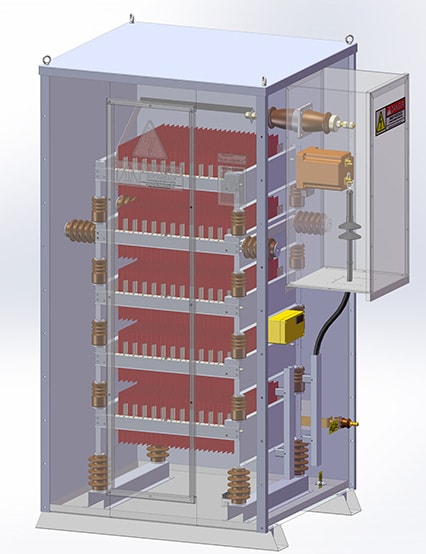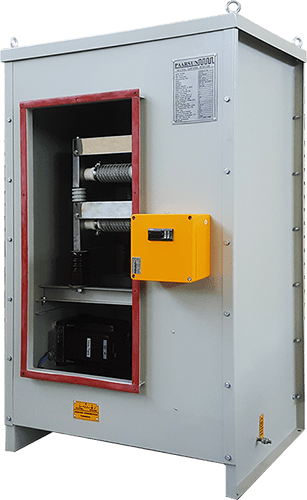What is NGR?
Neutral Grounding Resistor (NGR) is electrical equipment for transformer or generator protection which is placed between the neutral and earth nodes of the system. The topmost purpose of NGR installation is to limit the magnitude of earth fault current so as to prevent severe damages in power system equipment. Generally, NGR is a backup equipment for the main protection system.
Main advantages of utilizing NGR in power systems:
- Reduction of burn and melting effects in the equipment under fault condition such as switch-gears, transformers, rotating electrical machines (motors and generators), cables, etc.
- Reduction of mechanical stress created in power circuit and the equipment carrying fault current
- Reduction of hazards of electrical shocks caused by fault current for personnel.
- Reduction of hazards of explosion waves and sparks for the personnel near to the fault.
- Reduction of rate of overvoltage at the moment of occurrence /clearance of the ground fault
- Safe control of overvoltage and prevention of blackout in the power circuit under fault condition
- Main specifications of NGR:
—- Rated voltage —-
Rated voltage is the RMS Voltage (VRMS) in the rated frequency of the system which is applied between terminals of the equipment in the rated time and under standard operating conditions.
—- Rated Current —-
Rated current is the RMS Current (IRMS) of the neutral node which passes through the equipment in the rated time (considering thermal constraints in accordance with the standards). Determination of rated current depends on electrical characteristics of the power system, under-protection equipment, and also type of the utilized protection system.


—- Electrical Resistance —-
Electrical Resistance equals to ratio of the Rated Voltage to Rated Current. The value of Electrical Resistance is the basis of NGR design at temperature of 20 °C. The measured DC resistance at ambient temperature, will be corrected to the temperature of 20 °C, and maximum permissible tolerance is ± 10% (according to the standard). By request of the customer, it is possible to produce resistors with lower tolerances.
—- Rated time —-
Rated time is the time duration at which the equipment passes the rated current considering thermal constraints in accordance with the standards. According to the standard, the recommended Rated times are 10 Sec., 1 min., 10 min., and extended time, respectively. (The Rated times out of the aforementioned values also can be considered.). Typically, considering the configuration of the protection devices, the time duration of passing the fault current is much less than the Rated time. For determination of the Rated time, possibility of successive short-circuit faults should also be considered.
—- Rated Continuous Current —-
Rated Continuous Current is the current which can continuously pass through the equipment (considering thermal constraints in accordance with the standards). By passing the Rated Continuous Current, temperature of the resistors will reach the Steady-State Temperature.

